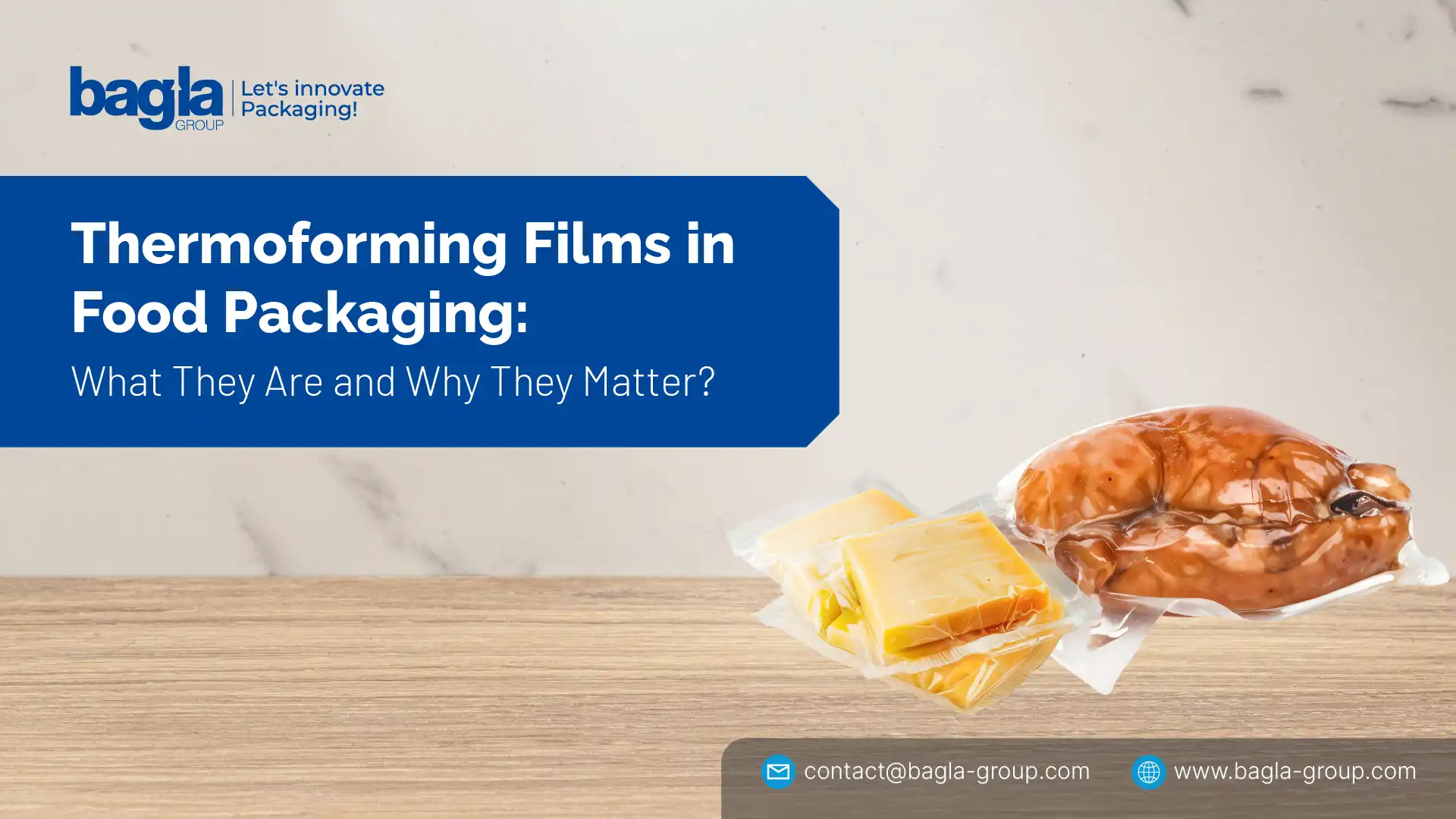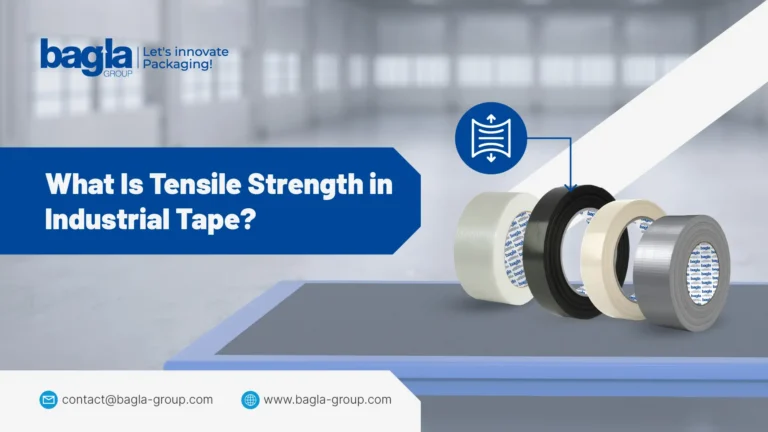As we know, packaging plays a vital role in today’s fast-paced food industry. Packaging is more than just wrapping a product – it protects, preserves, presents, and even acts as a branding tool. One of the best and unknown heroes behind this packaging is thermoforming films in food packaging.
These films are the reliable choice for manufacturers or distributors in creating vacuum packs, trays, and sealed containers that store and showcase food safely and attractively.
But have you ever thought what exactly thermoforming films are? Why do food manufacturers and distributors rely on them? And how can you choose the right thermoforming films for the food packaging of your products?
Let’s break it all down!
What Are Thermoforming Films?
Thermoforming films are thin plastic or polymer sheets that become moldable when heated. Once these films are heated, they form a specific shape using vacuum or pressure. Typically, it is used for wrapping perishable food items such as chicken pieces, cheese, sausages, & more. These films can be rigid, semi-rigid, or flexible.
Here, Bagla Group also offers types of thermoforming films for packaging meat, seafood, dairy, ready-to-eat meals, and many other perishable food products.
Why Do Thermoforming Films Matter in Food Packaging?
When a food manufacturer, distributor, or packer uses thermoforming films in food packaging then they find various functional, economic, and aesthetic benefits. These films are crucial in food packaging because of the transparency matter in food packaging, and other factors are as follows:
- Extend the shelf life of the product by using the vacuum and MAP (modified atmosphere packaging) technology.
- Protect products against contamination, puncture, and spoilage.
- Visual appealing with clear, glossy, or printable finishes.
- For better product fit and branding offers custom shapes and sizes.
- Hygiene & Compliance with global food safety standards
Thermoforming films are flexible and a safe food brands need for packaging premium seafood or frozen ready meals.
How Does Thermoforming Film in Food Packaging Work? (Step-by-Step)
Here you will get a simplified breakdown of the thermoforming films in the food packaging process:
- Heating – A plastic film is fed into a thermoforming machine and heated until it becomes pliable.
- Forming – This heat film is shaped into the particular product using vacuum or pressure forming.
- Cutting & Output – The final packs are trimmed and discharged for storage, shipping, or retail display.
Materials Used in Thermoforming Films
All the thermoforming films are not created equal. As per the packaging needs, the thermoforming films are made from various types of packaging film materials depending on the packaging needs. Here are the most common:
- PET (Polyethylene Terephthalate)
- PP (Polypropylene)
- PE (Polyethylene)
- PA (Polyamide / Nylon)
- EVOH (Ethylene Vinyl Alcohol)
- PVC (Polyvinyl Chloride) – Less Common Today
For a better understanding of each material, you can simply check our blog section on types of packaging films.
Types of Thermoforming Films
There are multiple types of thermoforming films. These films are categorized by barrier properties and structure:
- High-Barrier Thermoforming Films – These barrier films are designed for products requiring long shelf life. Crystalform HB can simply block the oxygen, moisture, and UV. Films are used in vacuum packs and MAP packaging for meat and seafood.
- Medium-Barrier Thermoforming Films – These films are the reliable option for the short-to-mid shelf life items like dairy, fresh pasta, or daily items. A cost-effective solution without sacrificing much protection.
Applications of Thermoforming Films in Food Packaging
Thermoforming films in food packaging are highly versatile. Here are key applications:
| Application Area | Example Products | Benefits |
| Fresh Meat & Poultry | Chicken, lamb, and beef cuts | High barrier, vacuum pack, no leakage |
| Seafood | Fish fillets, prawns, shellfish | Anti-fog top seal, freshness retention |
| Dairy | Cheese blocks, curd packs, yogurt trays | MAP sealed, high barrier against oxygen |
| Ready Meals | Frozen lasagna, microwave meals | Microwave-safe PP trays with sealing films |
| Vegetables & Fruits | Cut salads, fresh herbs | High clarity and breathable structure |
| Confectionery | Chocolate trays, protein bars | Aesthetic appeal and safety |
Advantages of Using Thermoforming Films in Food Packaging
- Food Preservation – These films help in maintaining freshness, nutritional value, and texture by reducing the oxygen and moisture exposure.
- Branding Flexibility – These films can be printed, embossed, or layered with branding elements for enhanced shelf appeal.
- Sustainability – Most of the thermoforming films are biodegradable and made from bio-based polymers, supporting eco-friendly goals.
- Customization – Available in various thicknesses, colors, and barrier levels to match specific packaging needs.
- Operational Efficiency – High-speed compatibility with modern packaging lines saves time and reduces labor costs.
Comparison Of Thermoforming Films vs. Other Packaging Films
| Feature | Thermoforming Films | Flow Wrap / Pillow Pack Films |
| Custom Shaping | Yes (via molding) | No (flat wrap) |
| Barrier Properties | Medium to High | Low to Medium |
| Suitable for Liquids | Yes (sealed trays) | No |
| Product Visibility | High (clear, rigid trays) | Medium to Low |
| Automation Ready | Fully compatible with FFS machines | Also compatible but less flexible |
How To Choose The Right Thermoforming Films?
When you are selecting thermoforming films for your business and products, you must consult with the expert first at Bagla Group, or you can simply check the below-mentioned points:
- Product Type – First, you need to check for which type of product you are looking for, thermoforming films such as dry, moist, fatty, acidic, or delicate.
- Shelf Life Requirement – Check do you need to increase the shelf life of that particular item, for which you need to choose between high-barrier MAP films or simple flexible wraps.
- Temperature Exposure – Need to check will the pack go in the microwave, chiller, or freezer.
- Machine Compatibility – Ensure that the film you are using suits your thermoforming and sealing equipment.
- Regulatory Compliance – Check for FDA, FSSAI, or EU food contact safety standards.
- Branding & Design Needs – To fulfill the branding or designing needs, check the films are compatible for Clear, Printed, Matte, or gloss finish.
Final Thoughts – Thermoforming Films in Food Packaging
Nowadays, where food safety, shelf life, branding, and sustainability are more important than ever, thermoforming films are at the forefront of food packaging innovation. These films are the best choice for a startup in the frozen foods space or a multinational meat producer. Thermoforming Films offer the performance, adaptability, and presentation your products deserve.
Looking to upgrade your food packaging? Partner with a reliable manufacturer of thermoforming films to ensure food-grade quality, high-barrier performance, and machine-ready compatibility.
Are Thermoforming Films Microwave-Safe?
Not all the thermoforming films are microwave safe, but you can use materials like PP. Always confirm the film type before using it in hot-fill or microwaveable products.
Can Thermoforming Films Be Printed?
Yes, film can be customized as per branding, barcodes, or QR codes using flexographic or digital printing.
Are Thermoforming Films Suitable For Export Packaging?
Yes, with the right barrier properties and certifications, they are ideal for global food shipments.
Are They Expensive Compared To Regular Films?
Thermoforming films can be cost-effective in bulk and offer better protection, reducing product loss and increasing value.



